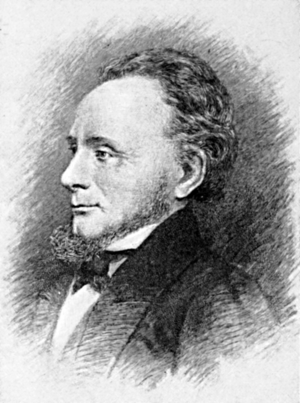Nathaniel Jarvis Wyeth facts for kids
Quick facts for kids
Nathaniel J. Wyeth
|
|
|---|---|
 |
|
| Born | January 29, 1802 Cambridge, Massachusetts
|
| Died | August 31, 1856 (aged 54) Cambridge, Massachusetts
|
| Occupation | Inventor, entrepreneur, explorer |
Nathaniel Jarvis Wyeth (born January 29, 1802 – died August 31, 1856) was an American inventor and businessman. He lived in Boston, Massachusetts. Wyeth made big improvements to the ice industry there. His inventions helped Boston harvest and ship ice all over the world.
In the 1830s, Wyeth also became a mountain man. He led two trips to the American Northwest. On these trips, he set up two important trading posts. One was in what is now Idaho, and the other was in Oregon.
In 1832, Wyeth traveled to Fort Vancouver. Two years later, in 1834, he led another trip. He founded Fort Hall in Idaho and Fort William in Portland, Oregon. He couldn't compete with the powerful Hudson's Bay Company. So, he sold his fur trading posts to them in 1837. After returning to Boston, Wyeth became very wealthy from his other businesses.
The site of Fort Hall is now a National Historic Landmark. It was a very important trading post in the Snake River Valley. Over 270,000 travelers on the Oregon Trail stopped there.
Contents
Early Life and Ice Inventions
Nathaniel Wyeth was born in Cambridge, Massachusetts. His parents were Jacob and Elizabeth Wyeth. He married Elizabeth Jarvis Stone on January 29, 1824.
In the 1820s, Wyeth started working in the ice business. He was a foreman for a company that harvested ice from Fresh Pond. He helped "Ice King" Frederic Tudor create New England's ice trade. This trade sent ice to places like the Caribbean, Europe, and India.
Wyeth invented many tools for harvesting ice. These tools made the work much faster and easier. He also designed special ice houses above ground. These houses had double walls to keep the ice frozen. People said that almost every tool used in the ice business was invented by Wyeth.
Exploring the Oregon Country
When Wyeth was 30, he became interested in the Oregon Country. This was a large area in the American Northwest. He thought there were great chances to make money there. He wanted to get rich from the fur trade. He also hoped to start farms and a salmon fishing business.
Wyeth joined William Sublette for part of his first trip. Sublette was taking supplies to a meeting of trappers. This meeting was called the Rendezvous of 1832. Wyeth's group traveled along what later became the Oregon Trail.
After a battle, many of Wyeth's men left. He continued with just a few people. They traveled along the Snake River. Wyeth finally reached Fort Vancouver on October 29. He then learned that his supply ship had sunk. This news made his remaining men want to go home.
Wyeth spent the winter at Fort Vancouver. He was very impressed with the Willamette Valley. He wrote that it was a beautiful place. He believed it would one day have many people living there.
In 1833, Wyeth went to another Rendezvous. He made a deal to supply the Rocky Mountain Fur Company. He then returned to Boston. His first trip wasn't a big money-maker. But he brought back many new plants for scientists to study.
Second Expedition and Trading Posts
In 1834, Wyeth prepared for a new trip. He planned to build fur-trading posts. He also wanted to start a salmon fishery and a colony. Two famous naturalists, Professor Thomas Nuttall and John Kirk Townsend, joined him. The missionary Jason Lee also came along.
Wyeth's group traveled with many goods. They reached the Rendezvous on June 19. There, William Sublette stopped Wyeth's supply contract. Wyeth continued west with Thomas McKay.
Wyeth quickly built Fort Hall in Idaho in July 1834. This fort later became a key stop on the Oregon Trail. Wyeth then built his second trading post, Fort William. It was on Wapato Island near what is now Portland, Oregon. Wyeth saw many empty Native American villages there. Diseases had caused many deaths.
Wyeth's company struggled to compete with the British Hudson's Bay Company (HBC). The HBC had stronger operations. Fort Vancouver remained the main trading post. Fort William was mostly ignored. Fort Hall didn't make much money because of Fort Boise. Fort Boise was built by McKay to hurt Wyeth's business.
In 1837, Wyeth sold both Fort William and Fort Hall to the HBC. He returned to Boston with a debt of $20,000. His five years of trying to build a business in the Oregon Country had not succeeded.
However, his second trip was very helpful for science. Thomas Nuttall collected and identified 113 types of western plants. He named a sunflower plant, Wyethia, in Wyeth's honor.
Later Life and Legacy
Even though his Northwest ventures failed, Wyeth became very rich. He went back to the ice-harvesting business. He continued to support American settlers moving to the Oregon area. He encouraged many people to go west.
Nathaniel Wyeth died at his home in Cambridge on August 31, 1856.
Honors
Two types of plants are named after Nathaniel Wyeth:
- Wyethia (in the Asteraceae family), named by Thomas Nuttall in 1834.
- Scabrethia (also in the Asteraceae family), named by William Alfred Weber in 1999.
Wyeth Family Connections
Nathaniel Jarvis Wyeth is part of the Wyeth family from New England. He was the great-grandson of Ebenezer Wyeth (1698–1754). Ebenezer was also the great-great-great-great-grandfather of the famous painter Andrew Wyeth (1917–2009). Nathaniel's father was Jacob Wyeth (1764–1847). His grandfather was Ebenezer Wyeth II (1727–1799).
Images for kids
See also
 In Spanish: Nathaniel Jarvis Wyeth para niños
In Spanish: Nathaniel Jarvis Wyeth para niños


